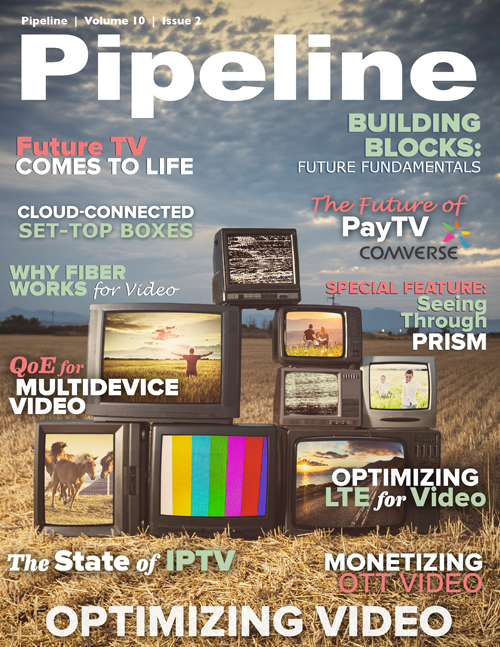Video Building Blocks: Future Fundamentals
The Content Age
Tomorrow’s services are going to be rich with content, and if content is king, video is surely his queen. Whether connecting a soldier far from home with his or her family, enabling sports fans to catch the last minutes of the playoffs from the edge of their seats, empowering a global or virtual workforce, or allowing families to catch up on their favorite shows, no other service touches more people more profoundly than video.
Despite its changing role, the network has never been more important, as more content-rich offerings continue to come to light. In a recent Ericsson report, the company forecasted 9.1 billion mobile subscribers by 2018, with video accounting for over half of all mobile-data traffic. For service providers, this means network coverage, capacity and performance will be critical in terms of managing their customers’ quality of experience (QoE). The network becomes the fundamental enabler for this “new” network and, ultimately, the customer experience.
However, delivering video well is not without its challenges. It requires considerable coverage, bandwidth, performance, and device ubiquity, and needs to provide access to compelling content. Couple that with the many different flavors of video content and services and the complexity increases exponentially.
“The OSS, BSS, network, CRM [customer relationship management], and CEM systems must all work in concert to deliver and ensure a high-quality video experience,” says Simon Frost, head of media marketing and communications at Ericsson. “This is required to provide not only a quality video service but to enrich it with custom content, interactivity and the level of personalization that customers demand.”
“Delivering superb video services can be very challenging,” adds Ericsson's Robert Emery. “To do it efficiently and effectively, service providers need an integrated product architecture that responds in real time, one that understands the limitless service variations and their associated network and device requirements and their capabilities.”
In April, Ericsson announced it had reached an agreement to acquire Microsoft’s Mediaroom business, strengthening its 20-year focus on addressing the TV-and-video value chain. It also broadens the company’s existing relationship with tier-1 IPTV providers such as AT&T, Deutsche Telekom, Telefónica, Telus, and Swisscom, expanding its already impressive customer base and tying it in closely with the steady growth in the IPTV market, which Ericsson predicts will reach 105 million subscribers and reach $45 billion by 2015. Mediaroom, touted as “the world’s most deployed IPTV platform,” addresses an integral component of managing and delivering video content to customers.
Earlier this month Ericsson also announced its intent to purchase London-based Red Bee Media. While the acquisition is still subject to regulatory approval, it adds another significant piece to Ericsson’s broadcast-services business. Red Bee Media provides a wealth of media services, including media asset management, digital video publishing, metadata services, and more.
When viewed in the broader context of Ericsson’s OSS, BSS, CRM, and CEM portfolios, its recent acquisitions of ConceptWave, Mediaroom and Red Bee Media seem to imply that Ericsson is betting on a future that includes content-rich, demand-driven services. It also seems to be putting all the right building blocks in place by focusing on TTM, CEM and integration, from catalog to billing, to offer a truly integrated architecture that can help service providers deploy rich video services when and where customers want them, all while maintaining a high QoE.
Ericsson has also continued to be a driving force behind the CEM movement by helping its customers evolve into the Customer Era. The company's Ericsson Experience Manager solution enables service providers to monitor, manage and analyze the customer experience by collecting and analyzing data from the network and end-user devices, then using that data to proactively address issues that affect customers. While few companies have such an extensive footprint as Ericsson, and although the market seems to be getting smaller by the day, this demonstrates that the building blocks of the future are here today and that some service providers have already begun to leverage this approach to offer a ubiquitous multidevice video and service experience.
Future fundamentals
Whether best-of-breed or best-of-suite, an integrated approach to an architecture that can interact with the network, propagate key information throughout the OSS and BSS architecture and integrate with CEM systems seems to be the way forward for the service providers of tomorrow.
It doesn’t have to be a transformative shift—it can be evolutionary. The future has yet to be written, and service providers now have the opportunity to influence their outcome by focusing on the interoperability between their new and existing systems and the network DNA that makes them truly unique.


















